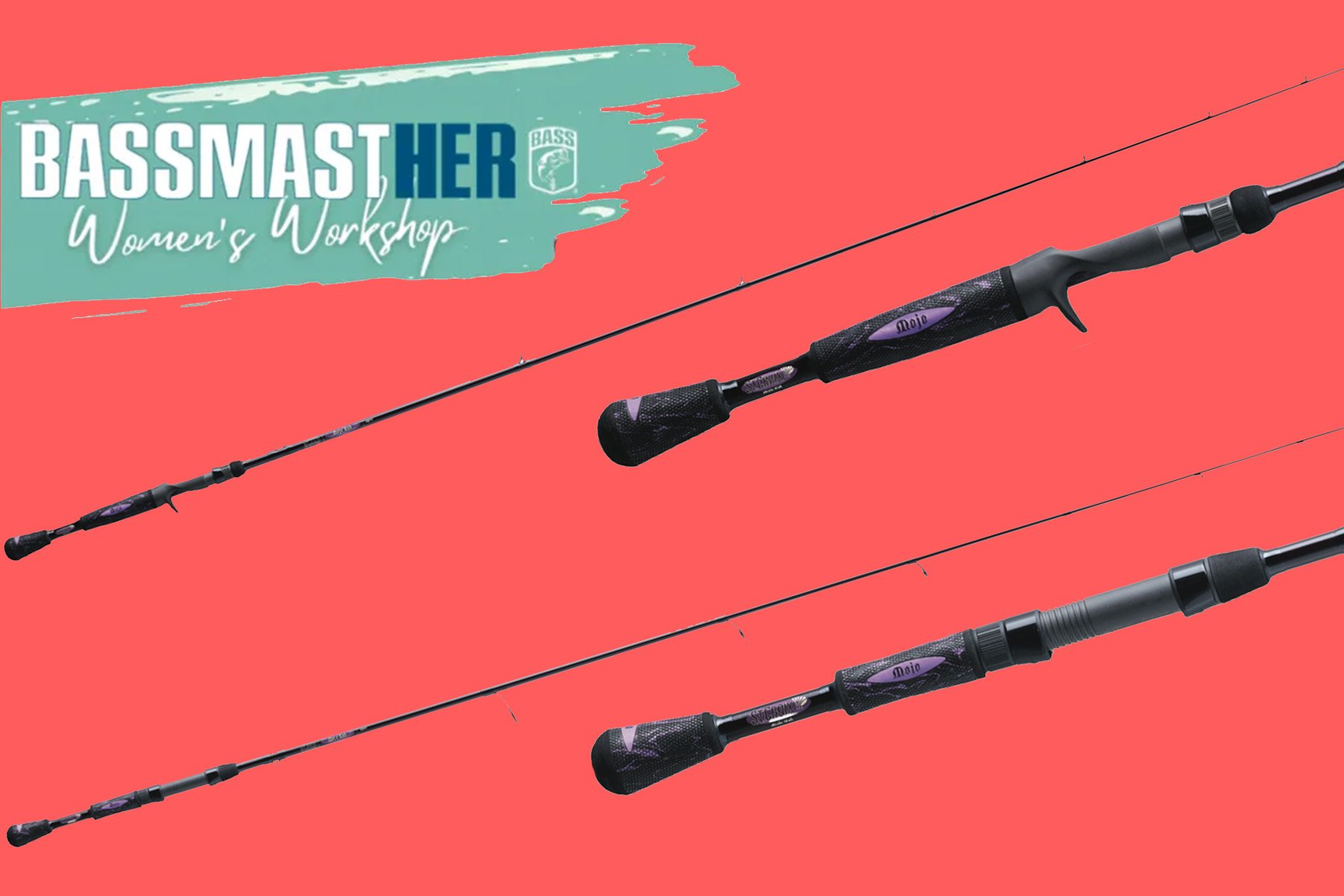
When you’re getting started with bass fishing, selecting the right rod and reel setup is crucial for success. The type of rod and reel you choose will depend on the techniques you want to use, the types of lures you plan to throw, and your level of experience.
Two of the most common setups for bass fishing are spinning rods and reels and baitcasting rods and reels. Each has its strengths, and knowing the difference will help you make the best choice for your style of fishing.
Spinning Rods
Spinning rods are among the most user-friendly rods, making them perfect for beginners. They are designed to pair with spinning reels, which are mounted beneath the rod. These rods are typically lighter and more flexible than baitcasting rods, allowing for smooth casting with lighter baits.

- When to Use: Spinning rods excel when you’re using finesse techniques such as fishing with lightweight soft plastics, small crankbaits, or drop-shot rigs. They are also great for throwing lighter lures or for when bass are finicky and you need a more delicate presentation.
- Pro Tip: If you’re new to fishing or targeting bass in clear, open water, a spinning rod is a great choice. Its ease of use and versatility make it a go-to option for beginners and experienced anglers alike.
Baitcaster Rods
Baitcaster rods are designed to handle heavier lines and lures and are paired with baitcasting reels that sit on top of the rod. These rods are stiffer and more powerful than spinning rods, making them ideal for casting heavier baits, controlling larger fish, and fishing in heavy cover.

- When to Use: Baitcaster rods are perfect for techniques that require precision and power, such as flipping, pitching, or throwing heavier lures like jigs, spinnerbaits, and big crankbaits. They provide better control when you need to accurately place your lure in thick vegetation or around structure.
- Pro Tip: Although baitcaster rods offer more power and control, they require more practice to master. Start with a medium to heavy rod when learning, and make sure to adjust your reel’s tension to avoid backlashes.
Spinning Reels
Spinning reels are one of the easiest reels to use, making them an ideal choice for beginners. They are mounted beneath the spinning rod and feature a bail that flips to release the line when you cast. Spinning reels are perfect for light line and lures, allowing for smooth casting without the risk of backlashes.

- When to Use: Use a spinning reel when finesse is key, such as when fishing with light tackle or in clear water where bass may be more skittish. Spinning reels are also great for casting lighter baits over long distances.
- Pro Tip: Spinning reels are a fantastic choice for soft plastics, drop-shot rigs, and small crankbaits. Keep your drag setting light to prevent breaking your line when fighting fish.
Baitcaster Reels
Baitcaster reels offer more power and control, making them the top choice for experienced anglers targeting larger bass or fishing in challenging environments. Mounted on top of the baitcaster rod, these reels allow for more precise casting with heavier baits. However, they require a bit more skill to use effectively.

- When to Use: Baitcaster reels are ideal when you need to throw heavy lures, such as deep-diving crankbaits, jigs, or spinnerbaits. They’re especially useful when fishing around heavy cover, like submerged logs or dense vegetation, where you need more control and strength to pull bass out.
- Pro Tip: Learning to use a baitcaster reel takes practice. Start with short, controlled casts and gradually increase your casting distance as you become more comfortable. Adjust the reel’s tension and braking system to avoid backlashes, especially in windy conditions.
Final Thoughts
Choosing between a spinning setup and a baitcaster setup depends on the conditions you’re fishing in and the lures you plan to use. Spinning rods and reels are great for finesse techniques and lighter baits, while baitcaster rods and reelsprovide more control and power for heavier baits and cover. Both setups have their place in your arsenal, and learning to use each one effectively will make you a more versatile and successful angler.





